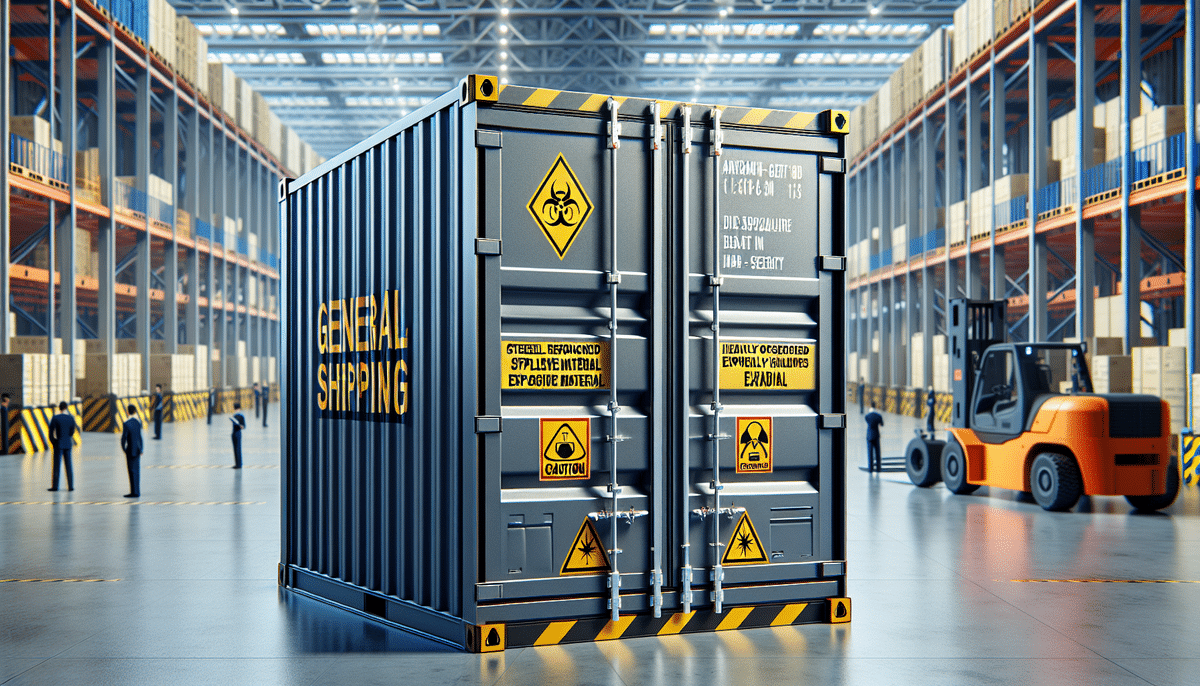FedEx Releases Updated Guidelines for Shipping Explosives
In response to the increasing demand for the transportation of explosives and other dangerous goods, FedEx has released updated comprehensive guidelines. These guidelines are designed to ensure the safety and security of human life and property during transit, while also complying with the latest international regulations.
Why Did FedEx Update Its Guidelines for Shipping Explosives?
The transportation of explosives is a highly regulated and complex process due to the inherent risks involved. The potential for accidents and incidents necessitates stringent protocols to prevent loss of life and property. FedEx updated these guidelines to:
- Ensure Compliance: Adhere to international regulations set by organizations such as the International Air Transport Association (IATA) and the International Civil Aviation Organization (ICAO).
- Maintain Safety: Provide a framework that safeguards employees, customers, and the general public.
- Enhance Reputation: Uphold FedEx's standing as a reliable and responsible carrier in the transportation industry.
Risks Associated with Shipping Explosives
Shipping explosives poses significant risks, including:
- Explosion During Transit: Explosives are highly unstable and can detonate if exposed to heat, friction, or impact.
- Theft and Misuse: The presence of explosives can attract malicious intent, increasing the risk of theft and misuse.
- Environmental Damage: An accidental explosion can release harmful chemicals, causing environmental harm and necessitating costly cleanup efforts.
- Regulatory Non-Compliance: Failure to adhere to safety protocols can result in substantial fines, legal actions, and reputational damage.
Legal Obligations for Shipping Explosives
All shipping companies, including FedEx, must comply with strict legal obligations set by regulatory bodies such as the Transportation Security Administration (TSA). Key obligations include:
- Proper labeling and documentation of explosive items.
- Adhering to packaging standards that prevent accidental detonation.
- Understanding and complying with destination-specific regulations.
Failure to meet these requirements can lead to severe penalties, including fines and criminal liability.
Permissible Types of Explosives for Shipping
FedEx permits the shipment of certain types of explosives, including:
- Commercial and military explosives used in mining and construction.
- Sporting ammunition and small arms ammunition.
Strict regulations still apply, such as obtaining necessary licenses and ensuring correct packaging and labeling. Notably, fireworks and homemade explosives remain strictly prohibited.
Proper Packaging and Labeling of Explosive Items
Ensuring the safe transportation of explosives involves meticulous packaging and labeling:
- Packaging: Must comply with regulatory guidelines, designed to withstand shocks and impacts during transit.
- Labeling: Clear identification with the proper shipping name, identification number, and necessary markings.
- Storage Conditions: Explosives should be stored in cool, dry, and well-ventilated areas, away from other hazardous materials.
Additionally, individuals handling explosives must undergo proper training and certification to manage these items safely.
Importance of Training and Certification for Handling Dangerous Goods
Proper training and certification are critical for anyone involved in shipping dangerous goods. FedEx ensures that its staff receive comprehensive training, covering:
- Risk assessment and hazard identification.
- Proper handling, packaging, and labeling techniques.
- Emergency response procedures.
Investing in training not only promotes safety but also enhances compliance with regulatory standards, reducing the likelihood of accidents and legal issues.
The Role of the Transportation Security Administration (TSA)
The Transportation Security Administration (TSA) plays a pivotal role in regulating the transportation of dangerous goods. Their responsibilities include:
- Enforcing safety and security regulations related to explosive materials.
- Providing guidance and oversight to ensure compliance with best practices.
- Collaborating with other agencies like the Federal Aviation Administration (FAA) and the Department of Homeland Security (DHS) to enhance transportation security.
Challenges Faced by FedEx in Transporting Explosives
Transporting explosives presents several challenges for FedEx:
- Regulatory Compliance: Navigating complex international and domestic regulations.
- Specialized Equipment: Utilizing dedicated transportation equipment designed to handle explosive materials safely.
- Security Measures: Implementing stringent security protocols to prevent theft and unauthorized access.
- Real-Time Monitoring: Employing advanced tracking technologies to monitor shipments continuously.
To mitigate these challenges, FedEx has invested in robust training programs, state-of-the-art equipment, and advanced tracking systems, ensuring the safe and secure transportation of explosives.
Best Practices for Safe and Secure Transport of Explosives
Implementing best practices is essential for the safe transport of explosive materials:
- Vendor Evaluation: Assessing the safety records and compliance of transportation vendors.
- Regulatory Adherence: Ensuring all shipments meet local and international regulations.
- Proper Labeling and Packaging: Using compliant materials and clear labeling to identify dangerous goods.
- Specialized Training: Providing ongoing training and certification for personnel handling explosives.
- Regular Inspections: Conducting routine checks of transportation vehicles and equipment to maintain safety standards.
- Contingency Planning: Establishing emergency response plans to address unforeseen incidents during transport.
Case Studies: Successful Transport of Explosives by FedEx
FedEx has a track record of successfully transporting explosives while adhering to strict safety and regulatory standards:
- Mining Industry Shipment: Delivered large commercial explosives to a major mining site efficiently and without incident, earning positive client feedback.
- Military-Grade Explosives: Successfully transported military-grade explosives to government facilities, meeting all specialized handling and security requirements.
These case studies highlight FedEx's commitment to safety, reliability, and compliance in the transportation of hazardous materials.
Future Developments in the Transportation of Dangerous Goods and Explosives
The field of transporting dangerous goods and explosives is continually evolving. Key future developments include:
- Advanced Technology: Integration of sensors and real-time tracking devices to monitor the condition and location of shipments.
- Autonomous Vehicles and Drones: Utilizing autonomous transportation methods for remote or hazardous areas.
- Sustainability Initiatives: Developing alternative fuel sources and more efficient transportation methods to reduce environmental impact.
FedEx is at the forefront of these innovations, investing in research and development to enhance the safety, efficiency, and sustainability of transporting dangerous goods and explosives.
Conclusion
Shipping explosives safely and securely requires a combination of strict adherence to regulations, proper training, advanced technology, and robust security measures. FedEx's updated guidelines and ongoing commitment to best practices ensure that the transportation of hazardous materials is handled with the utmost care and responsibility. By continuously evolving and investing in new technologies, FedEx remains a trusted leader in the safe transportation of dangerous goods.






















